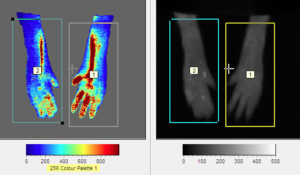Rosacea pathology background / Clinical views

Rosacea is a common skin disease. It often begins with a tendency to blush or flush more easily than other people.
The redness can slowly spread beyond the nose and cheeks to the forehead and chin. Even the ears, chest, and back can be red all the time.
Rosacea can cause more than redness. There are so many signs and symptoms that rosacea has four subtypes:
- Erythematotelangiectatic rosacea: Redness, flushing, visible blood vessels.
- Papulopustular rosacea: Redness, swelling, and acne-like breakouts.
- Phymatous rosacea: Skin thickens and has a bumpy texture.
- Ocular rosacea: Eyes red and irritated, eyelids can be swollen, and person may have what looks like a sty.
With time, people who have rosacea often see permanent redness in the center of their face.
That’s the reason why preclinical models of rosacea are needed for testing efficacy prior to clinical testing.
IMAVITA is able now to propose operational efficacy testing service in this pathology.
Rosacea preclinical model / Overview
- Induced pathology in murine model by skin heating (Infra-Red lamp)
- Immunocompetent rodent sp. (Balb/c & C57Bl6)
- Evaluation of clinical endpoints / scoring:
- Skin redness
- Laser Doppler Imaging / Skin vasodilatation evaluation after skin heating
- Evaluation of vaso-constrictor effects of new drugs (brimonidin topical as reference drug)
- Image analysis for quantification of vasodilatation / vasoconstriction
- Statistical analysis of efficacy data
For additional informations on preclinical models in the area of dermatology, please inquire.
